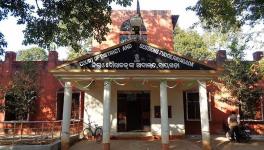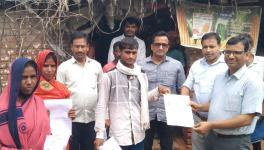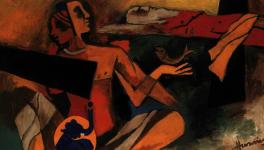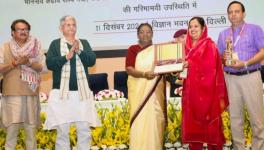Navigating caste More Difficult Than Studies for Backward Class Girls
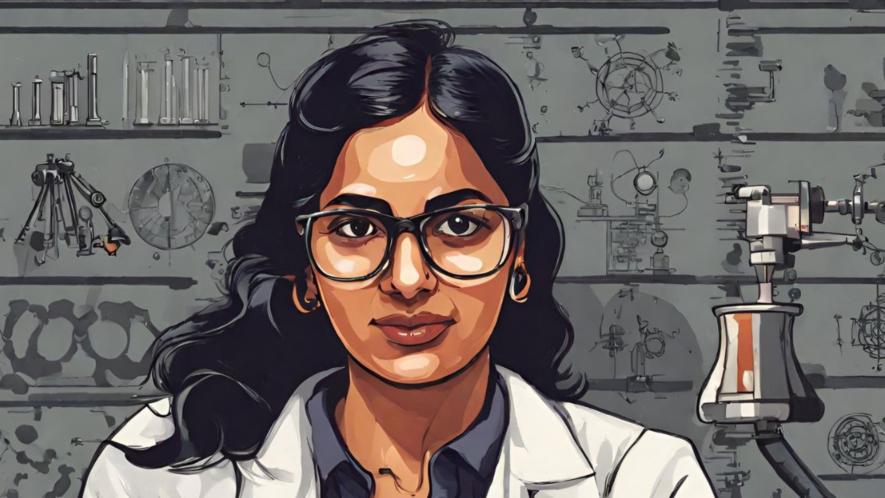
Women from backward classes and minorities struggle against the caste hierarchy and monopoly and gender biases in science, technology, engineering, and mathematics.
Mumbai: Tanuja* (38), a Dalit student from Maharashtra, worked single-handedly as a health researcher to do the primary study of the subject, planning and research in four years. However, her name was dropped when the time for publishing the research study came with the institution refusing to give her credit as an author.
However, she quietly kept asking the senior teachers to include her name. The head of the department (HoD) scolded her but Tanuja was unrelenting and outside the HoD’s office for more than eight hours. Finally, her name was mentioned— but only in the abstract.
“Will the institution deny credit to a girl from a dominant class?” she asks.
The question has been asked by several women from backward classes and minorities, especially those from rural settings, who struggle against the caste hierarchy and monopoly and gender biases in STEM (science, technology, engineering, and mathematics).
For Scheduled Castes (SCs), Scheduled Tribes (STs) and minorities, the struggle begins at home.
Geeta* (32), a PhD Dalit student from Uttar Pradesh at the Indian Institute of Technology (IIT), has four sisters and a brother. “When I passed class 10, my father refused to send me to a private college in our area. I got a chance only because of my brother,” she recalls.
“Most Gond girls of my age have studied only up to class 10 or 12. Some are even married. Due to their poor economic status, most families prefer educating their sons. But my father wanted to make me a doctor. As a teacher, his financial status was better than others though we stayed in a village,” says Utkarsha Surpam (23), from the Gond community of Sonegaon, Yavatmal district.
ACCESS TO SCIENCE
Girls from backward classes and minorities pass higher secondary (HSC) examinations with good marks, but they have to prove their merit in the National Eligibility cum Entrance Test (NEET) and Joint Entrance Examination. Students from dominant classes join entrance coaching from earlier classes, but those from backward classes cannot afford it.
Despite family support, Surpam learned about NEET just before her HSC examination and had no choice but to join private coaching.
“The 45-day course cost Rs 16,000, which was not affordable,” she says. As the preparation was insufficient, she studied from home for another year. The following year, Surpam got admission for the bachelor in ayurvedic medicine course in Nagpur.
A Balai tribal from Melghat, Yogita Kochalkar (25) went through an arduous struggle for STEM entry. “Colleges and teachers at Melghat were not well-qualified to teach science. Therefore, NEET preparation was quite tough.”
She went to the Nanded district, 350 km from her home, to prepare for NEET. After two years, Kochalkar secured a seat in bachelor of medicine and bachelor of surgery. The fourth woman doctor from her community, she is the medical officer of Melghat Public Health Centre.
WHAT STATISTICS SHOW
According to the All India Survey on Higher Education 2020-21, the proportion of females from backward classes who have enrolled for STEM courses is significantly less than that of open-class females. The proportion of females from SCs was about 30% and STs only 9%.
In March, Union minister of state for education Subhas Sarkar informed the Rajya Sabha that more than 19,000 SC, ST and Other Backward Classes students have been thrown out of the education stream in the last five years from IITs, IIMs and Central universities across the country.
While 14,446 students from the three categories dropped out of Central universities, 4,444 dropped out of all IITs, of which 1,362 were from SC category and 538 from ST category.
They have to prove themselves at each step as they got admission to reserved seats. A peculiar narrative has been generated to term reservation as anti-merit.
Mayuri More (26), an engineering student from Nanded district, says, “Comments on reservation are often passed by friends and professors casually. It hurts a lot, but I do not know how to respond. I choose to be quiet or avoid them.”
Dr Sylvia Karpagam, a public health doctor and researcher who had analysed the (ab)use of X by doctors in the context of reservation, remarks, “It is shocking to know how educated people, including doctors, academicians, researchers and policymakers, negatively perceive reservation. They must acknowledge and understand its importance.”
The Times of India analysed details of nearly 57,000 students admitted to 409 colleges last year. The average NEET score of students in government-controlled seats was 448 out of 720 while the quotas under private control averaged just 306.
Incidentally, the average score of students admitted under the SC quota in government colleges was 398 and the overall average of SC students in all colleges was 367—both much higher than the overall average for privately controlled seats.
PRACTICE OF DISCRIMINATION CHANGES
Most of the backward class girls come from rural areas and are first-generation graduates in their families. Their caste identities are barriers to their participation in cultural events and academic conferences.
“We feel the difference at each level … The opportunity to lead any initiative or programme is always missed,” says dentistry graduate Anuja Bhavare (27), from Nanded.
“IITs have student councils. But backward class girls are never allowed to participate or play a leading role in elections,” says Geeta.
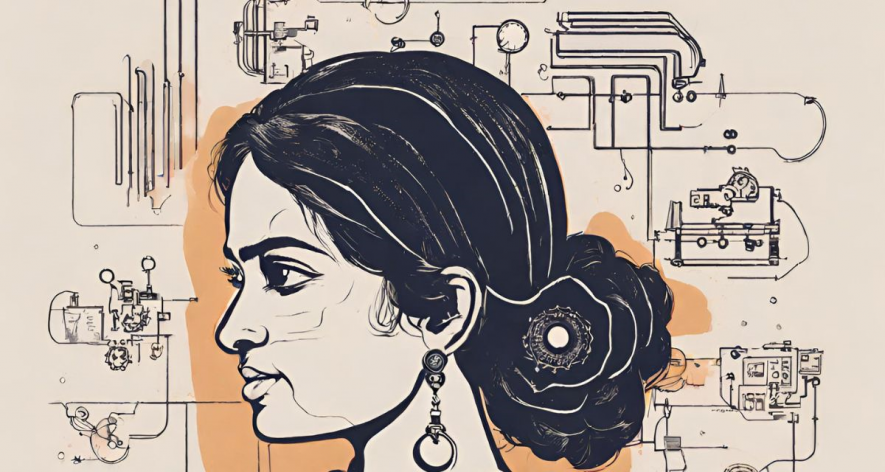
Girls and women face subtly critical comments about academic performance at higher education institutes.
Even professors question their meritorious performance. In a well-known science institution, campus interviews for SCs and STs were about to begin when one of the professors on the panel said, “Let us get rid of the interviews of SC and ST candidates soon. After these, some good candidates will come.”
Over the period, the practice of discrimination has changed. Dr Jyotsna Waghmare, a Dalit professor at the Institute of Chemical Technology, says, “Nobody now directly tells you not to touch the teapot or glass of water. But the policy of caste discrimination is rampant to stop you in the way of progress like education, job and promotion. Everyone knows this, but no one dares to speak.”
Mostly, girls and women face subtly critical comments about academic performance, isolation by peers and discrimination in training practices.
In May 2019, Dr Payal Tadavi, the first woman doctor from Adivasi Muslim Bhil community, a Scheduled Tribe, committed suicide due to the alleged caste abuse by seniors.
“No one discriminates directly but no one spares you either,” Geeta remarks.
SHORTAGE OF BACKWARD CLASS PROFESSORS
Although backward class girls are surviving in the disparity, it has not been possible for them to do PhD or get higher jobs. Consequently, there is a significant shortage of female professors.
According to an article ‘How India’s caste system limits diversity in science’ on Nature website, 98% of professors and more than 90% of assistant and associate professors are from privileged class at higher-tier IITs and Indian Institute of Science, Bengaluru, while all the faculty at the Tata Institute of Fundamental Research in Mumbai are from the privileged castes.
Girls in IIT say that backward-class students feel confident when they see their representative in the faculty.
“We run support groups to help backward-class students. We cannot reach all of them because there are not enough backward-class professors to support us. When their numbers increase, the anti-caste movement will flourish and there will not be a single suicide at IITs,” they hope.
Gita Chadha, a sociology professor at the University of Mumbai, has been working on feminism and science studies for about two decades. “We should remember that science institutions are part of our society. Therefore, its perceptions exist at these institutions also.”
Women in science and technology are rarely found at the level of professors, heads of departments, directors, senior scientists and consultants.
In BTech, Geeta was the only one among the four girls in her class to pass. She was selected on the campus and joined a big company in Pune. However, she was ostracised right from her seat. Some colleagues insulted and belittled her. Frustrated with the harassment, Geeta finally resigned.
“The caste discrimination that I endured in the company for two years still hurts me. The salary and provident fund for the month I resigned were not given to me due to the bond I has signed. I have not even received my experience certificate,” she adds.
Tanuja says that she unwillingly quit her job because her name was not mentioned as an author in the research. “After working so hard, it was tough to leave the job. The matter still bothers me,” she says. The research is now in its final stages and the subsequent research paper is about to be published. Tanuja hopes against hope that her name will be present.
Shailaja Tiwale is a Maharashtra-based freelance journalist and a member of 101Reporters, a pan-India network of grassroots reporters.
Get the latest reports & analysis with people's perspective on Protests, movements & deep analytical videos, discussions of the current affairs in your Telegram app. Subscribe to NewsClick's Telegram channel & get Real-Time updates on stories, as they get published on our website.











